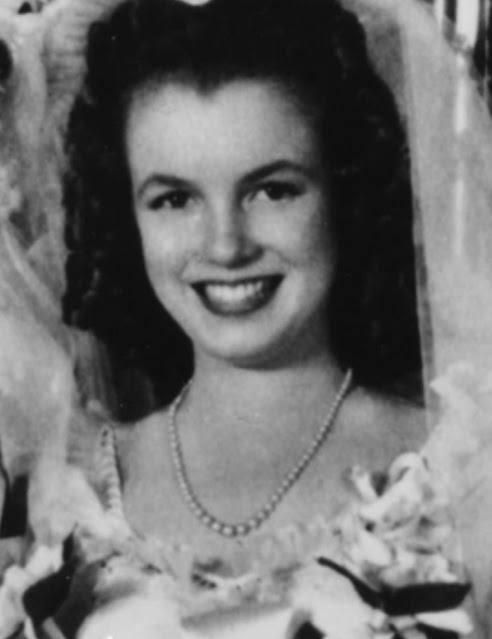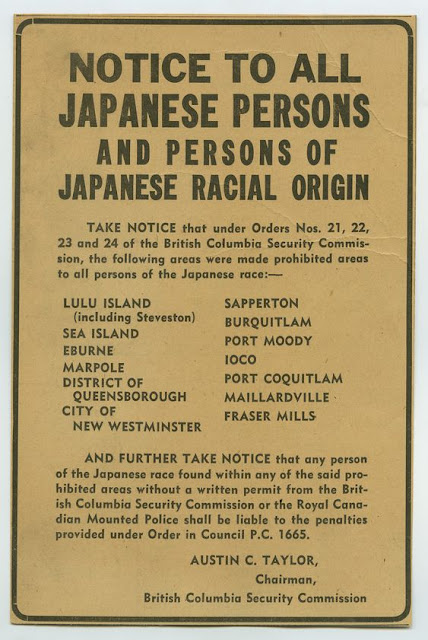Sunday 21 June 1942
 |
| German generals Erwin Rommel and Fritz Bayerlein, Afrika Corps Chief of Staff, in Tobruk ca. 21 June 1942 (Moosmuller, Federal Archive Picture 101I-785-0299-08A). |
Battle of the Mediterranean: South African Major General Hendrik Klopper, commander of all Allied forces at Tobruk, spends the early hours of 21 June 1942 trying to figure out a strategy following the German breakthrough at the port perimeter. Klopper sends a message to Eighth Army Headquarters, "Am holding out but I do not know for how long." Army headquarters responds by suggesting a breakout on the night of the 21st/22nd. Eighth Army commander General Ritchie orders his 7th Armored Division to attempt a relief mission from the south. At 02:00, Klopper signals that he agrees with the breakout but somewhat cryptically adds that the garrison would "fight to the last man and the last round."
At dawn, though, Klopper reviews the situation and changes his mind. After Klopper informs HQ of this, Ritchie replies, "I cannot tell tactical situation and therefore leave you to act on your own judgment regarding capitulation. With this clearance, Klopper quickly invites some German staff officers to his headquarters in Tobruk to discuss terms. Klopper then orders a surrender which some units do not honor, and scattered fighting by holdouts continues in various places into the 22nd, but the surrender effectively ends the battle for the port. The Germans claim 25,000-33,000 (19,000 British) prisoners (sources differ) of the British 30,000-troop garrison. The Germans only suffer 3360 casualties.
It is a brilliant lightning attack, as the Axis forces only surrounded Tobruk on the 18th. Most German generals would have settled in and built up forces over a long period of time for a set-piece attack against such a formidable target, as Erich von Manstein has done in Crimea regarding Sevastopol. However, Rommel proves here that speed of attack and strategy is sometimes more important than weight of numbers.
 |
Italian medium tank of the Ariete Division advancing on Tobruk, ca. 2 June 1942. |
In the United States, British Prime Minister Winston Churchill is meeting with President Franklin Roosevelt when an aide come in with a message for the President. FDR then passes the note to Churchill, who has his own military aide confirm the news from London. Churchill later writes that this is the greatest shock he receives during the entire war. He says to FDR, "Give us as many Sherman tanks as you can spare and ship them to the Middle East as quickly as possible." These tanks will prove important - perhaps decisive - at El Alamein in October and November.
On the German side, there is tempered joy., as noted below with General Halder's official reaction. Theater Commander Field Marshal Albert Kesselring visits Rommel's headquarters in the afternoon and reminds him of a previous understanding that an invasion of Malta would follow. To that end, Kesselring informs Rommel that he is withdrawing Luftwaffe units from North Africa to Italy.
 |
| British POWs marched out of Tobruk ca. 21 June 1942. |
German E-boats are operating off Tobruk to forestall an evacuation by sea and they claim 250-ton South African Navy auxiliary minesweeper HMSAS Parktown. There is one death.
RAF bombers attack and sink 7744-ton German freighter Reichenfels, which is bringing supplies for Rommel's panzers, north of Tripoli.
British submarine Turbulent torpedoes and destroys Italian destroyer Strale. The Italian ship had run aground due to attacks by Royal Navy Fairey Swordfish) at Ras el Amar on 21 March 1942. There are one dead and 221 survivors. There are alternate dates for all of these events at various places online (this sinking is sometimes fixed on 6 August), but the basic facts are confirmed.
 |
| A Soviet commander of a Cossack unit in the Kharkov sector of the Eastern Front, 21 June 1942 (AP Photo). |
To the south and east of Sevastopol, the Axis forces remain stuck. The Romanian 18th Infantry, 1st, and 4th Mountain Divisions are advancing slowly up the Chernaya River toward Severnaya Bay, with LIV Corps on its left providing flank protection. Soviet artillery on Sapun Ridge provides good counter-battery fire that destroys Axis artillery pieces.
The Germans are preparing Operation Fridericus II, a shallow envelopment by Sixth Army and First Panzer Army near Kupyansk, to begin on the 22nd. It is one of a series of small preliminary operations to Operation Blau. Heavy rains in this portion of the front have delayed German operations.
At Fuhrer Headquarters in East Prussia, General Franz Halder barely mentions the fall of Tobruk, or indeed North Africa at all. There is only a succinct "Tobruk taken" at the bottom of his summary. This is more evidence that the General Staff doesn't think much of the North African campaign or, for that matter, of Rommel. They view him as a loose cannon who "rushes around frittering away his forces." Rommel was not their first choice for command there and he is viewed as a prima donna. That Rommel has succeeded is thus not a cause for joy there. However, Hitler does like Rommel, and the general is considered somewhat of a Fuhrer favorite - another cause for resentment by the other staff officers.
Halder does provide a brief update on the Major Reichel incident:
Major Reichel's plane has been found. He probably is dead. The documents, filled with vital information, must by now be in enemy hands.
Halder is absolutely correct: Stalin has the Blau plans sitting on his desk. However, the Soviet premier believes the plans are faked by the Germans to lead him in the wrong direction and thus completely disregards them.
 |
Italian medium tank M13/40 of the Italian 132nd Panzer Division "Ariete" at Tobruk Harbor ca. 21 June 1942. |
The German generals, though, naturally don't know about Stalin's reaction. Halder and his staff's attention is completely preoccupied with the upcoming Operation Blau. Field Marshal Fedor von Bock, whose troops will carry out Blau, fears the worst and urges Halder to tell the Fuhrer - who apparently is still on holiday at the Berghof - about the Reichel incident (about which apparently Hitler does not yet know). Hitler predictably is shocked and arranges to fly back to East Prussia immediately.
Halder does have a lot to say about Sevastopol, though, which arguably is a lot less important to the overall war effort than North Africa:
At Sevastopol, the Battery Headland peninsula is in our hands and consequently we are now controlling almost the entire north shore (LIV Corps). Good progress by 30 Corps. The enemy appears to be abandoning the front opposite the Romanians in order to concentrate his forces against 30 Corps. On the Volkhov, heavy attacks supported by tanks, which were repelled with difficulty. Otherwise, no change.
 |
| Shell crater at Fort Stevens from I-25 shelling, 21 June 1942 (National Archives 299678). |
The failure to return fire or take any other action causes a scandal. The commander, Colonel Doney, forbids any counterfire despite numerous requests from the batteries. The reason why is a bit of a mystery, but Doney - who is only in temporary command of the post while the real commander is away - may be trying to assert his authority and "show who is boss" to his troops.
No counter-fire is attempted because the defenders are unable to spot the submarine in the dark. The shells only create craters and destroy power/telephone lines and a baseball field, but this marks the first time during the war that an enemy shells a military installation in the United States.
US Navy submarine USS S-44 torpedoes and sinks 2626-ton Japanese auxiliary gunboat Keijo Maru south of Guadalcanal (a dozen miles west of Gavutu) in the Solomon Islands. There are 63 deaths and 62 survivors, rescued by the Japanese minesweeper W-20.
Two men from Torpedo Squadron Six off of USS Enterprise who have been adrift in a liferaft since 4 June are rescued by a USN PBY-5A 360 miles north of Midway. They had ditched their TBD Devastator during the battle.
 |
| German sentries inspecting the Stirling bomber downed on 21 June 1942 near Hoorn, The Netherlands (COR KOOMEN). |
European Air Operations: A Stirling bomber flying out of Norfolk on a raid to Emden is downed over the Netherlands by a night fighter in the early morning hours, killing three of the eight crewmen. Flight Lt. Alan Green is briefly hidden by Dutch farmers before being captured and sent to Stalag Luft 3. The three dead crewmen are buried near Hoorn.
NF Oblt. R. Sigmund of II/NJG 2 shoots down another Stirling I bomber, No. W7472, in the North Sea about 3 km west of Bergen aan Zee. All 8 crewmen perish.
Battle of the Atlantic: U-128 (Kptlt. Ulrich Heyse) torpedoes and sinks 5681-ton U.S. freighter West Ira southeast of Barbados. The ship sinks in 15 minutes after the U-boat stalks it for about six hours. There are one death and 48 survivors. Some survivors are picked up by the Dutch freighter Macuba, others reach shore in their lifeboats.
Royal Navy submarine HMS P.514 - formerly U.S. submarine R-19 that had been transferred under Lend-lease - is sailing on the surface off St. Johns, Newfoundland, when it is mistaken for a U-boat and rammed by a Royal Canadian Navy minesweeper, HMCS Georgian. P.514 sinks with all hands.
Yugoslavian (Croatian) 2317-ton freighter S.S. Lina Matkovic hits a mine and sinks about 1000 yards north of the Cristobal East Breakwater Light near the Panama Canal. The craneship U.S. Atlas salvages the valuable parts of the cargo. This sinking is sometimes listed on the 20th.
Swedish 1847-ton ore freighter SS Eknö hits a mine and sinks in the Weser River.
U.S. 4823-ton freighter Alcoa Cadet hits a mine and sinks in the Kola Inlet near Murmansk. Everyone survives.
 |
Generals Rommel and Bayerlein survey the port of Tobruk ca. 21 June 1942. That appears to be a Type 40 medium off-road passenger car with an inside spare. (Moosmuller, Federal Archive Picture 101I-785-0299-22A). |
Partisan Stuff: Following the German victory against the Belov partisans south of Vyazma on the 20th, Germany Fourth Army commander General Kluge ends the ongoing Hannover II anti-partisan operation. Meanwhile, German Second Army winds up Operation Vogelsang, which began on 6 June, near Kirov. It does not discontinue its operations, though, and will begin Vogelsang II on the 22nd. An upcoming anti-partisan operation will be Ninth Army's Operation Seydlitz that begins on 2 July near Rzhev. These anti-partisan operations usually produce little and occupy a lot of troops throughout the summer.
US Military: The War Department elevates the Alaskan Provisional Service Command to XI Air Force Services Command. It will maintain and supply all of 11th Air Force's bases.
Israel Homefront: Israel records its highest temperature to date at Tirat Avi, 129.2 degrees Fahrenheit (54 Celsius).
American Homefront: President Roosevelt and Winston Churchill travel to Washington, D.C., from FDR's Hyde Park, New York residence. There, they continue their talks during the Second Washington Conference. King Peter II of Yugoslavia also is visiting the United States.
 |
| German light tank Pz. Kpfw. I Ausf. A enters Tobruk ca. 21 June 1942. |
















